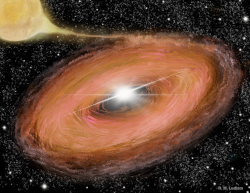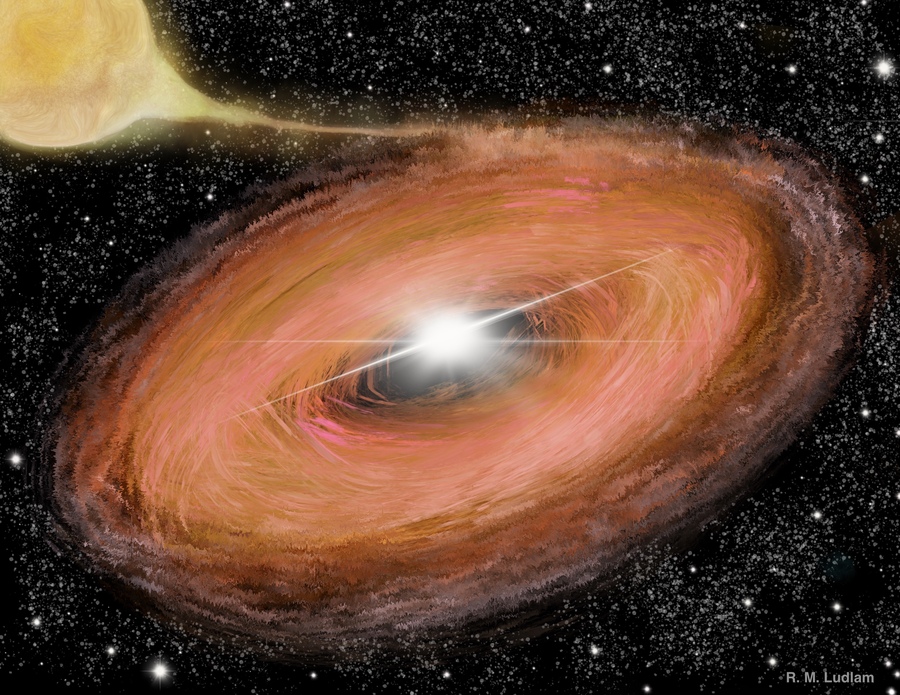The brightest stars in the X-ray sky are
X-ray binary systems, where luminous X-ray emission is powered by material gravitationally stolen from a (more-or-less) normal star falling onto a compact object, usually a
neutron star or
black hole. As the star and its compact companion revolve around their common
center of mass, the stellar motion and gravity produce a stream (of mostly hydrogen and helium) from the normal star, which then forms a
thin, hot, spinning disk around the compact object, before eventually falling onto the compact object's surface (or, in the case of a black hole, through its
event horizon). Accretion from the stellar companion to the accretion disk around the compact object is illustrated in the picture above. As the material swirls closer to the compact object, its speed increases, faster and faster, and the material heats up, hotter and hotter, reaching temperatures of millions of degrees, so hot that most of the radiation it generates is high-energy X-ray emission. For some reason, this gravitational theft of star stuff by the compact object changes with time, a puzzle to astronomers. Transient X-ray outbursts occur during times of high accretion, fading away as the accretion rate drops. New observations of the outburst in a neutron star low-mass X-ray binary called 4U 1608-52, obtained by the
NICER X-ray telescope on the
International Space Station, along with
Swift and
NuSTAR have provided astronomers the most detailed look so far as to how the accretion disk around the neutron star in 4U 1608-52 changes as the X-ray outburst fades. These detailed observations show that the accretion disk in the 4U 1608-52 binary system actually changes shape, from a thin, opaque disk during the outburst to an extended, transparent disk as the outburst fades away. These observations suggest a close connection between the amount of X-ray emission being generated and the ohysical state of the accretion disk.
 HEAPOW: Messy Eater (2020 Jun 15)
HEAPOW: Messy Eater (2020 Jun 15)
